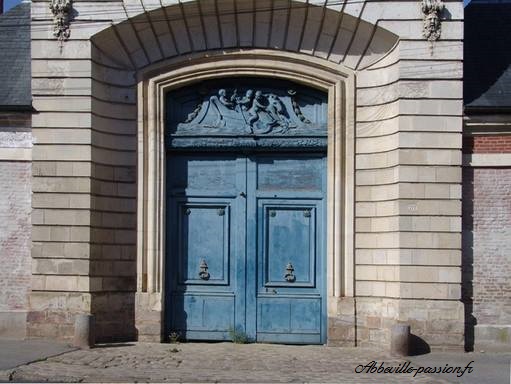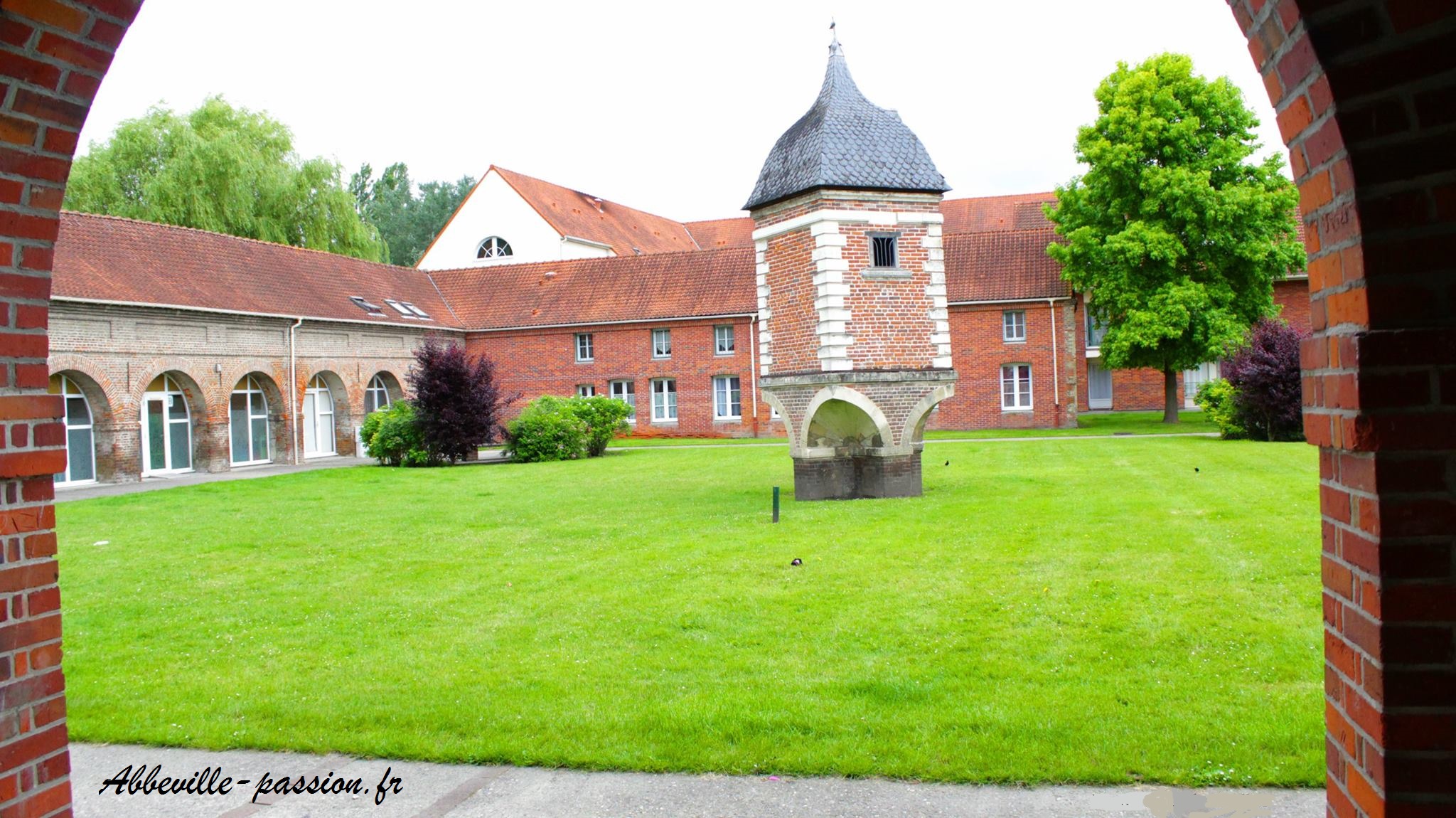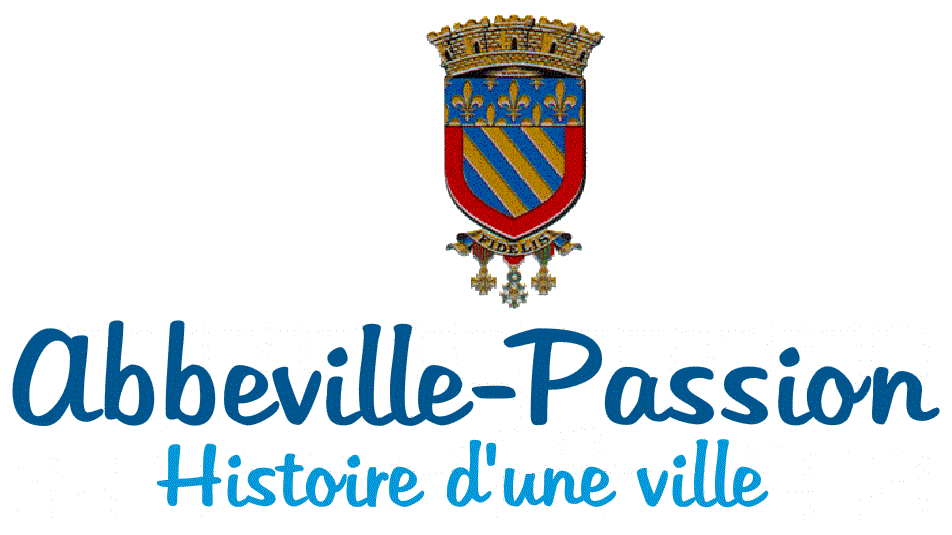-

 Monuments
Monuments- • L'hôtel de l'Alhambra
- • Monument La Barre
- • The "Baths and Shower"
- • The Bourdois or Small Echevinage
- • The Carmel
- • The Charterhouse of Thuyson
- • The Municipal Theatre
- • The bridge of the Six Moulins
- • The château de Bagatelle
- • The manufactures des Rames
- • The naked woman
- • The so-called new house "Van Robais"
- • The train station
- • The Battle Abbeville
- • The liberation of Abbeville
-

 Personalities inhabitant of Abbeville
Personalities inhabitant of Abbeville- • Albert Laurent, Musician and literary
- • André Maurois
- • Ernest Prarond
- • Father Pierre Carpentier
- • François-Jean Lefebvre, Chevalier de La Barre
- • Henri Caron, painter of the Bay of Somme
- • Jacques Boucher de Crèvecoeur de Perthes
- • Jean-François Lesueur
- • Max Lejeune and the reconstruction of Abbeville
- • Pierre François Guerlain
- • Roger Agache
- • Rose Bertin
- • The Admiral Courbet
- • Van Robais
-

 Sports
Sports- • SCA
1145566 visitors
28 visitors online
It all starts early in the reign of Louis XIV, when Colbert, finance minister promotes the establishment of foreign manufacturers to benefit from their expertise in fine linens manufacturing.
Thus arrived at Abbeville Josse Van Robais in 1665, beneficiary of a royal privilege. Originally from Middelburg, he settled with about fifty Dutch workers, his family, his pastor at the Mayeur and founded several looms and fulling mills Street City Hall first in the heart of the city fortified. But the workshops are scattered here and there, sometimes extramural.
However, the factory soon became one of the most flourishing industrial establishments of the kingdom: in 1700, it has 1500 permanent workers and 1500 occasional spinners.
In 1708, Josse's son, Isaac, bought a huge piece of land outside the ramparts of the town of Chaussée d'Hocquet and overlooking the harbor to regroup the workshops. On this ground rises soon, built by a great Protestant architect of his acquaintance, the Manufacture des Rames, whose name refers to the frames that kept the tissues moist and tense.
A magnificent portal, sculpted by Baron Pfaffenhoffen, to enter the courtyard with buildings around the factory.
The factory gate:

This monumental gate sis of hocquet floor is stone shear. Both leaves and its tympanum carved by Baron Pfaffenhoffen, is perhaps the oldest carved portals on Abbeville
On the tympanum, an allegorical figure representing the conquest of the golden fleece. There are three children. The right one is sitting on the neck of a sea horse and holds a Navy anchor. The middle oar making hand Neptune's trident The third brandished in his left hand a caduceus, then symbol of commerce. The allegory as a whole represents the attainment of the factory to maritime trade. Indeed, the production thereof was sought everywhere, including abroad and transiting by ship to England or Holland
The hotel des rames
Thus the so-called central main building.
The ground floor housed offices, the first floor accommodation owners. The second floor attic and was just under the roof structure.
Although it was completed in 1713, the building could not be occupied until 1715 because of a collapse due to inadequate foundations
The layout of the rooms was made so that the house could accommodate several families. In 1718, the building consisted of four distinct apartments and servants lived above the second.
The hotel was sold by Van Robais in 1809 to Jean-Antoine Vayson. He refused repeatedly the recovery of the hotel by the city who wanted to make a library and a museum. Besides this, she still recovered six statues now stored in the reserves of the Boucher de Perthes Museum for restoration and classified since 1985. Also three large statues of Diana, Apollo and Mercury were exhibited in the Garden 'Emonville today remains only Apollo, Mercury and Diana were removed to be restored.
The side buildings and the garden:
The side buildings served manufacturiers.Contre workshops at one of the two side buildings runs a small channel communicating with the Somme, which then surrounded a beautiful English garden.
The pigeon:

Under the mandate Max Lejeune, a subdivision is created between the factory and the Louandre street there is "Les Arcades".
Amid this development, annex to the old factory, a beautiful square dovecote, restored, once the heart of arcaded buildings (played by new), serving farmyard, stables, workshops, sheds and fodder wool, linen lehrs.
This court was separated from the western wing of the factory in a shed for drying sheets and behind this court on a large stood six rows oars, oars being the frame that held the taut fabrics to give them the desired width uniformly.
But Van Robais will soon have to fight against competition, compounded by the loss of exclusivity in manufacturing.
Lorsqu'éclate the Revolution, they are not directly concerned since "non-noble", but the collapse of the economy unfortunately forced liquidation in 1793.
After the acquisition in 1809 by Mr. VAYSON and other (Mr. Lemaire, Mr. RAUDOING), the trains stop working at the end of the nineteenth century. Bought and sold by the city, the hotel is now not visible to the public except by way of towing and along rental housing.
Category : - Monuments
Page read 19068 times
Copyright
Images and texts are not royalty-free.
If you want to use one of the photos or texts on the site, do not hesitate to contact us and explain how you intend to use them.







